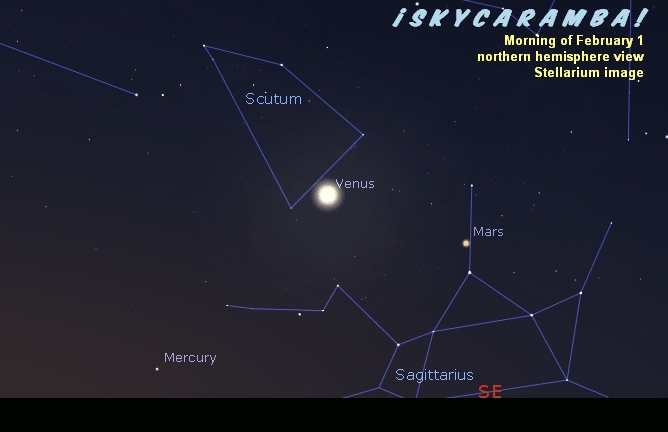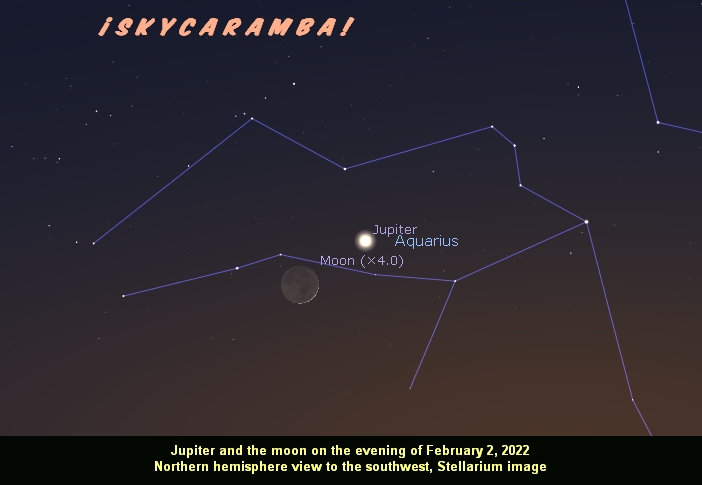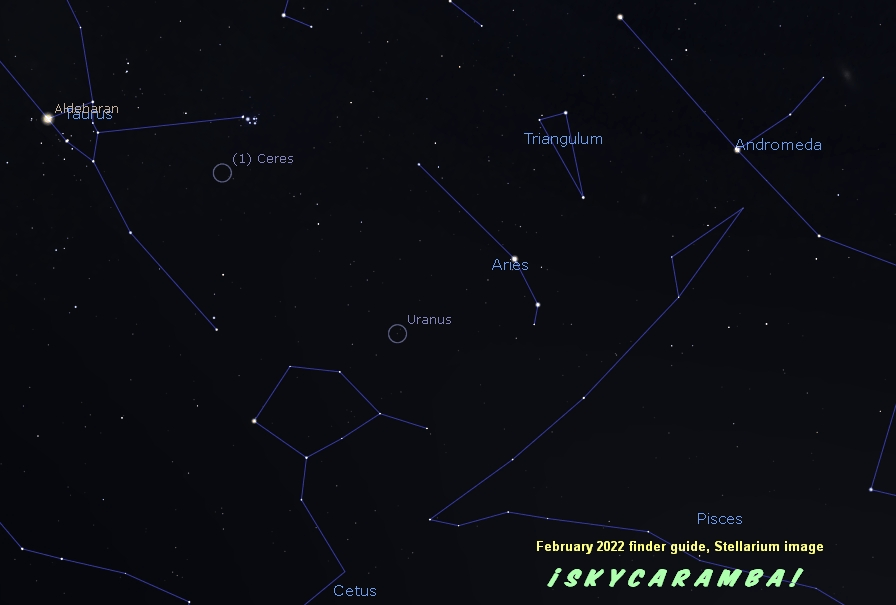
Brilliant Venus shines left of Mars in the morning twilight at February’s start. Venus is in Scutum and Mars is above Kaus Borealis (the northern bow star) atop the Sagittarius teapot. Close to sunrise, you may be able to find Mercury below them left of Sagittarius. Venus and Mars draw closer to each other as they move into the northern part of Sagittarius. They seem to be moving toward Mercury also, but the messenger planet isn’t staying. It stays nearly in place for about a week into the month and then retreats toward the sun. Mercury’s at greatest elongation 26.3° west of the sun on the 16th. Mars and Venus continue slowly closing in on each other until they are tracking parallel to each other in the last few days of February. The waning crescent moon pulls close to them on the morning of the 27th.

In the last few days of the month, Mercury and Saturn are close. But they are also in the light of the sun glow before sunrise for watchers in the middle and high latitudes of the northern hemisphere. You might spot them there with binoculars. The ringed planet is left of Mercury. This is your first chance to see it after its solar conjunction on the 4th. The view is much better for those near the equator and south of it. If that’s where you’re watching from, you get a good chance to see Mercury and Saturn together. And with the moon in the neighborhood on the 27th and 28th, it’s going to be even more splendid!

Jupiter, its departure from the evening sky imminent, sets a couple hours after the sun as the month starts. A new crescent moon is close to the planet on the evening of the 2nd. By mid-month, you won’t be able to see the planet in the post-sunset glow except perhaps with binoculars. After that, don’t even try.

Neptune is somewhat above Jupiter this month. You’ll need binoculars or a telescope to see the faint blue dot. A finder guide, such as the animated graphic here, will help you.

Uranus is also a faint blue dot. It’s near the head of Cetus this month. It’s another object that requires magnification and a finder guide. The animated graphic here also shows how Ceres moves between the Pleiades and the Hyades. It’s a faint white dot that also requires magnification.
Mercury is at aphelion 0.467 astronomical units from the sun on the 28th.
Mars goes through its southward equinox on the 24th. It’s the equivalent of Earth’s September equinox.
The moon will pass in front of Uranus on the 7th. You’ll have to be in the ocean area southwest of South Africa to see it.
Moon phases for February: new on the 1st, first quarter on the 8th, full on the 16th, last quarter on the 23rd.
The moon goes north of the equator on the 5th, reaches northern lunistice at 26.4° on the 12th, goes south of the equator on the 19th, and reaches southern lunistice at 26.6° on the 26th.
Lunar apogee is on the 11th at 405,000 km or 251,600 miles. Perigee is on the 26th at 367,700 km or 228,500 miles.
